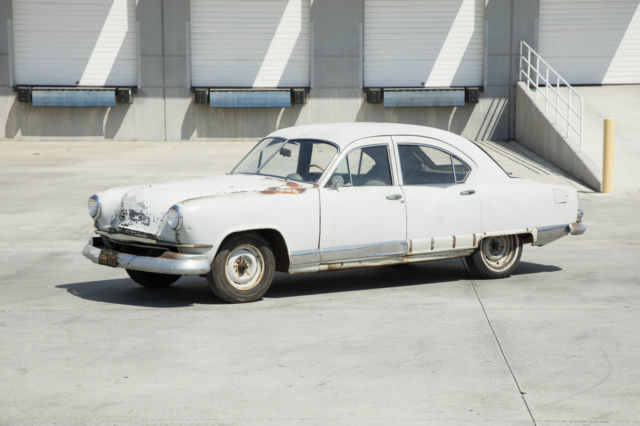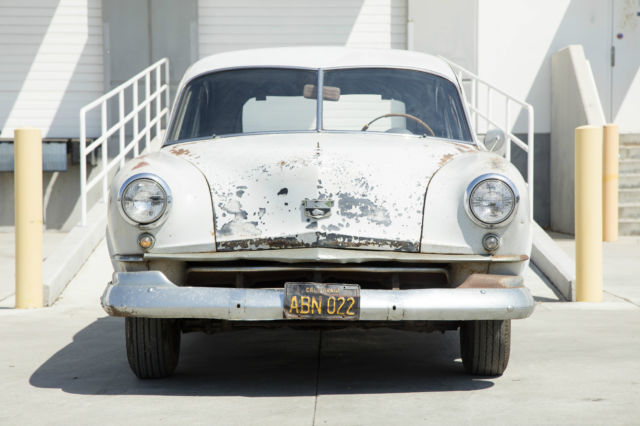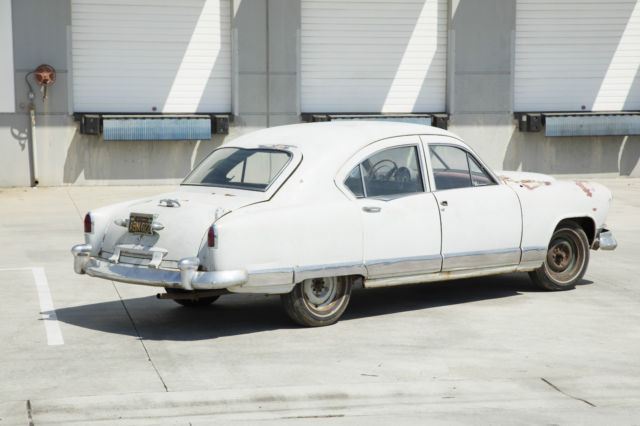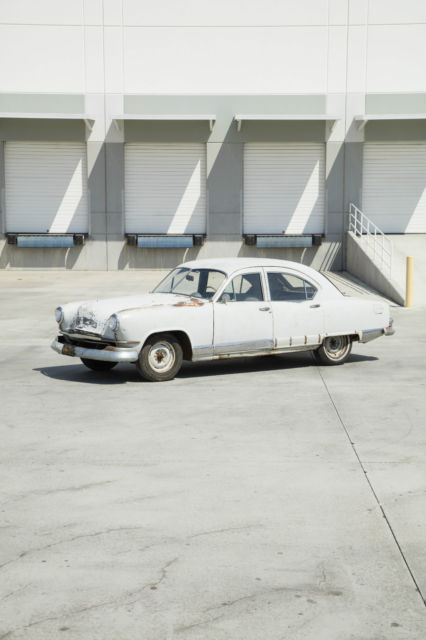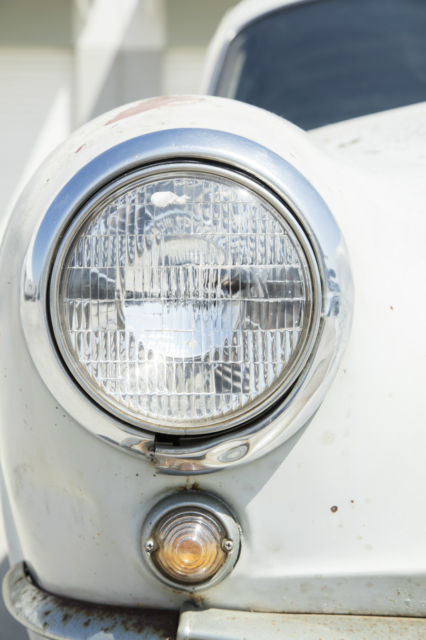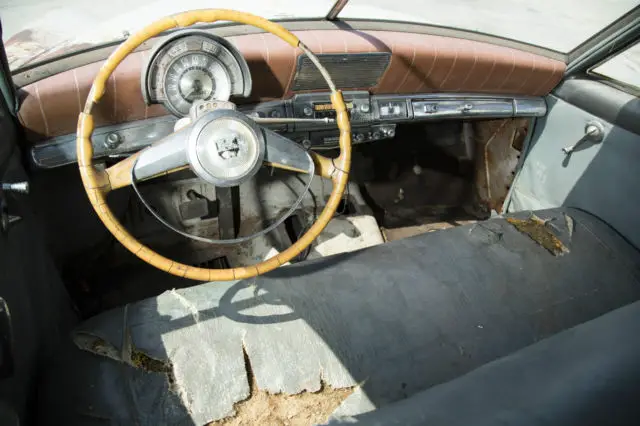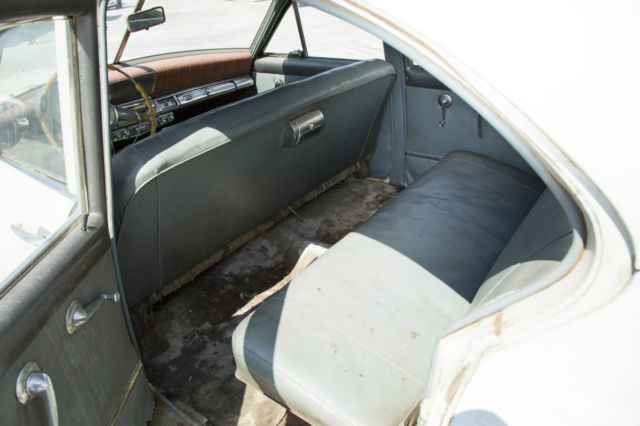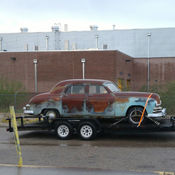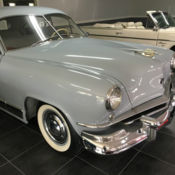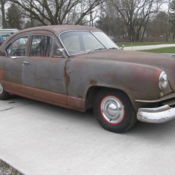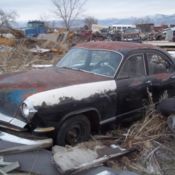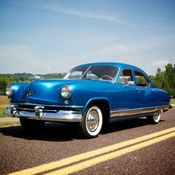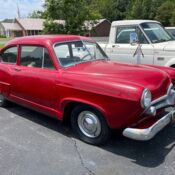1951 Kaiser Traveler 4-door sedan, restoration project, pretty much complete
| Condition: | Used |
| Make: | Other Makes |
| Model: | Kaiser Traveler Sedan |
| SubModel: | NO RESERVE!! |
| Type: | Sedan |
| Trim: | . |
| Year: | 1951 |
| Mileage: | 1,111 |
| VIN: | 11111 |
| Color: | White |
| Engine: | I6 |
| Cylinders: | 6 |
| Fuel: | Gasoline |
| Transmission: | Manual |
| Drive type: | RWD |
| Interior color: | Gray |
| Vehicle Title: | Clear |
| Item location: | Venice, California, United States |
| Extras |
| Listed by | Private seller |
Description of 1951 Other Makes Kaiser Traveler Sedan NO RESERVE!! |
|
Restoration Project offered without reserve! 1951 Kaiser Traveler 4-door Sedan Most radical automotive designs came from the drafting boards of the independent auto manufacturers, the ones less beholden to static corporate ideals and stockholder skepticism. Kaiser, in particular, was known for its memorable and daring designs. In the late 1940s, Detroit's Big Three were still pushing to meet post-war demands, so they had little free time to create new and different cars; they relied on retooling established sales leaders. Unencumbered by such restrictions, Kaiser engineers of the time designed a four-door sedan with a rear "trunk" door that, when open, and with the rear seat folded down, transformed the interior into a large cargo area. Thus, it was innovative Kaiser that gets full credit for an automotive first with its Traveler and Vagabond hatchback sedans. After World War II, with the great need for transportation, many newcomers entered the automobile industry looking for success. Henry J. Kaiser, a shipbuilder during the war, was looking forward to the postwar period. He anticipated the needs for houses, medical care, and automobiles; and “built” all three. For his automobile work, he took on a partner; the Kaiser-Frazer Corporation was created in 1945 as a joint venture between the Henry J. Kaiser Corporation and Graham-Paige Motors, for which the CEO, Joseph W. Frazer, also became president of Kaiser-Frazer. Henry Kaiser is perhaps most famous today for anticipating the needs for medical care; he set up a kind of HMO for his employees during the 1940s, and when other, smaller West Coast companies asked about participating in it, the ground-breaking Kaiser Permanente was created. Henry Kaiser had worked from a modest beginning to build an empire of shipbuilding, steel, and cement production, earning the title “the Miracle Man” by building remarkable numbers of ships during World War II. Joseph Frazer worked his way up in Packard, rising from manual labor to the executive ranks. Frazer moved to General Motors, then to Chrysler Corporation; while at Chrysler, Frazer set up the sales program for DeSoto and coined the “Plymouth” name for the corporation’s base-line make. In January 1946, two well-kept secrets were revealed to the public in the Waldorf Astoria Hotel in New York City: non-running prototypes of the new Frazer and the revolutionary Kaiser K85 family car with front-wheel drive. While there ultimately was a running front wheel drive Kaiser, the development time was too short to bring it to production, and there were problems with the Packaged Power front wheel drive unit; the final decision was to use the same body and drivetrain for both the Frazer and Kaiser. Kaiser-Frazer Corporation’s first car was launched for the 1947 model year. Known as the Kaiser Special, it was a four door sedan with a six cylinder engine. Kaiser and Frazer cars had the first true postwar sheet metal, with enveloped bodies and fender lines that ran front to rear in an unbroken contour; the bodies had welded steel construction. The Kaiser boasted between-the-wheel seating, wide wheel rims, a low center of gravity, a large luggage compartment, curved wraparound bumpers, dual horns, twin sun visors, automatic dome lights, and large, hydraulic self-centering brakes. The Kaiser radiator grille was a mixture of vertical and horizontal blades (not unusual for the period) with rectangular parking lamps placed outside the grille work, under the headlamps. Modern features included aluminum alloy pistons, an automatic choke, double-acting hydraulic brakes, independent suspension, curved rear window, and fresh-air heater. The manual choke would, in time, be replaced with an automatic “climate control.” New for 1949 was a new four door hatchback, known as the Traveler, costing $2088. Kaiser bragged that the Traveler led a double life: they were easily converted from a family sedan to a pick-up van in just ten seconds, thanks to an early hatchback design. However, suffering against the “Big 3”, sales fell off and when the results were in, 80,000 1949 Kaisers had been sold, for a loss of $31 million. In a last ditch effort to stay in business, Kaiser-Frazer landed two loans from the Recovery Finance Corporation. The 1951 models introduced the basic structure as would remain until the end of Kaiser production in 1955. The shape was changed, less boxy with an increased area of glass — a sleek, modern-looking automobile. A padded dashboard was added to Deluxe, for protection in an accident. The old-pontoon shape was gone as well, as the bull-nosed frontal appearance. The Kaiser now had the highest-horsepower standard six-cylinder engine of any American car except Hudson, launched at the lowest prices ever offered for the car. Sales were complicated by the Korean War, but around 145,000 model-year-1951 Kaisers found new homes, showing them to be a rousing success at launch. Kaiser bragged about their cars’ new “Anatomic Design” made to fit the human anatomy, including a pistol-grip handbrake and two-spoke steering wheel. Both the Special and the Deluxe had more spacious interiors and four models and body styles, including two and four door Traveler sedans. The Kaiser Traveler, a four door utility sedan, was advertised as a luxurious sedan that could be converted to a light duty van in just ten seconds. With increasing pressure from the other manufacturers and heavy financial losses from poor sales, Kaiser was forced to close their doors in 1955. The example offered here, of 1951 vintage was donated to The Natural History Museum of Los Angeles approximately 20 years ago. Languishing in a local Southern California back yard for many years, the car is in need of a full restoration. However, because of the local climate, the car is in remarkably good condition. In close to complete state, it will need a lot of attention to the mechanicals and cosmetics, but with a very active owner’s club and a host of parts suppliers, (with many parts being interchangeable with other manufacturer’s cars of the day) and support groups, the restoration should be a relatively smooth one. The car has been in climate controlled storage for 20+ years and was a California native prior to that, so it is a dry, relatively rust-free starting point. The Traveler design was especially appealing to campers and surfers in their day, so what a cool alternative to a Woodie or VW bus? Below is an excerpt from the Buyer's Guide from Hemmings Classic Car January, 2010 - Matthew Litwin ENGINES Kaiser's Traveler and Vagabond were both powered by a 226.2-cu.in. straight-six engine rated for 112hp and 180-lbs.ft. of torque. Fitted with a Carter two-barrel carburetor, the engine was a modified version of the Continental straight-six, which Kaiser-Frazer had purchased the rights to. By doing so, minor issues among earlier versions--predating the 1949 models--were ironed out, providing trouble-free dependability. TRANSMISSIONS Like the engine, Kaiser's transmissions were known to be durable and trouble-free. The company used the same three-speed Borg-Warner manual transmission (with column-mounted shifter) as found in Studebakers, Nashes and other cars of the era. Nearly all cars were fitted with the overdrive option, for friendlier highway cruising; no automatic was available. DIFFERENTIAL The hypoid Spicer differential is the standard bulletproof design fitted with semi-floating axles. SUSPENSION Under each Kaiser--regardless of the model--is a standard independent front suspension, complete with coil springs, tubular hydraulic shock absorbers and an anti-roll bar. At the opposite end is a semi-elliptic leaf spring system complemented by tubular hydraulic shocks. BODY/FRAME The Traveler and Vagabond were designed to function with the hatch and/or tailgate open during normal driving. Door hinges tend to be more stout than on other makes, while the hatch hinge, which is not spring-loaded, is easily held open, thanks to the hatch support design. Also designed into these unique cargo carriers is a swinging rear license plate bracket, enabling anyone to clearly see if the registration is current with the rear gate in its open position. While it looks like a four-door sedan to the casual observer, only three doors operate by normal means. Due to the rear hatch, engineers moved the full-size spare to a vertically mounted position on the left rear door of the car's interior, which provided for more cargo capacity. As a result, the left rear door was welded shut at the factory. Meanwhile, the top portion of the rear hatch, including the rear window, flips up much like a modern window unit, while the lower portion drops fully open just like a station wagon. With the rear seat folded forward, cargo space was expanded to roughly 83 cubic feet. Specialists Classic 2 Current Fabrication 734-718-1124 Kaiser Bill's 435-454-3098 www.kaiserbill.com Kanter Auto Products 800-526-1096 www.kanter.com Metro Molded Parts 800-878-2237 www.metrommp.com Rudy's KF Parts 760-789-3608 SMS Auto Fabrics 503-263-3535 www.smsautofabrics.com Tarheel Kaiser-Frazer 336-784-5153 www.angelfire.com/nc2/TarheelKF Walker's Auto Pride 719-749-2668 Parts Prices Brake drum, front $40 Brake hose, front $34 Camshaft $147 Clutch plate, NOS $28 Exhaust system $278 Fender script, Traveler $41 Floor pan, front $60 Front end rebuild kit $338 Fuel gauge, NOS $35 Fuel pump $90 Grommet, driveshaft $9 Horn ring, used $24 Leaf spring, pair $650 Master cylinder $83 Piston $60 Rocker panel $30 Valve spring $6 Water pump $97 Weatherstrip, door $4/ft. Wheel cylinder kit $8 Kaiser-Frazer Owners Club International P.O. Box 424 Thomasville, Alabama 36784 |
 Home
Home Contact us
Contact us NEWEST CARS
NEWEST CARS SELL YOUR CAR
SELL YOUR CAR FAQ
FAQ
